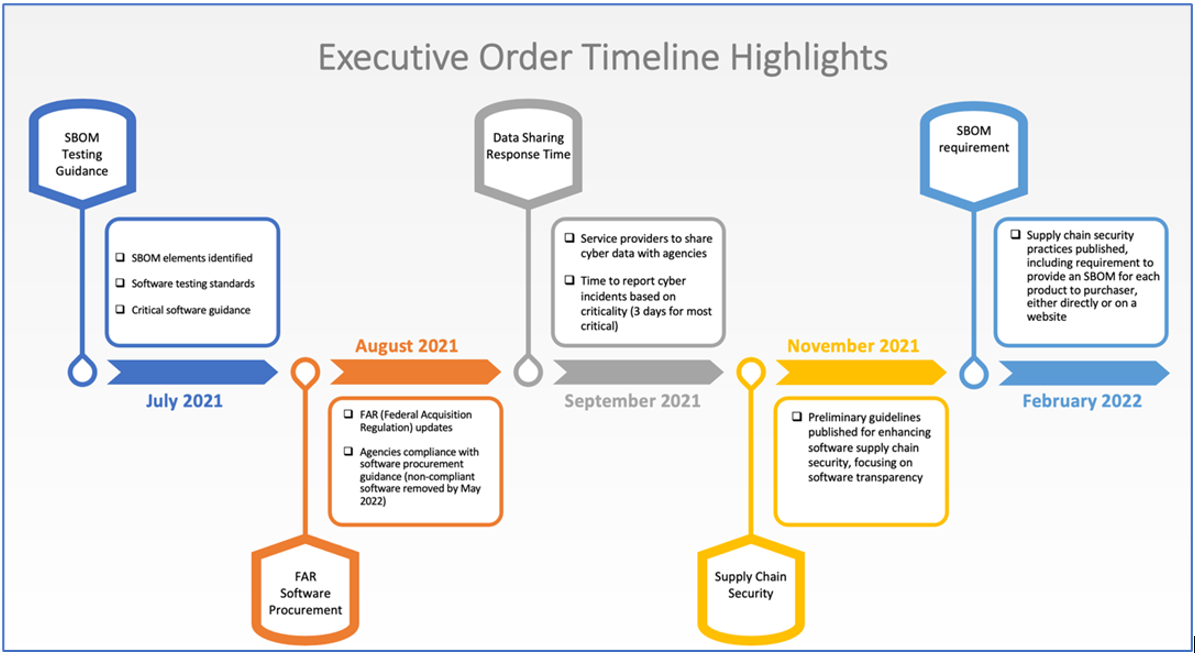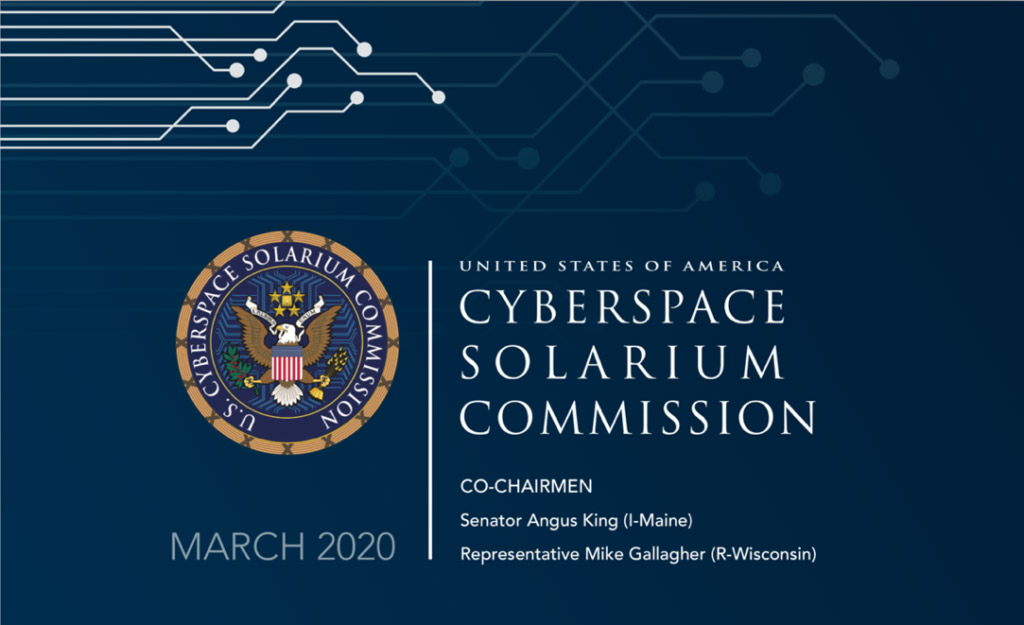Are you prepared for US cybersecurity legislation that could result in lawsuits and fines if not implemented according to prescription? Did you know that the 2019 National Defense Authorization Act chartered the US Cyberspace Solarium Commission (CSC) to define such cybersecurity policies and legislation? As a stakeholder in the healthcare industry, you should be aware of the CSC final report and the possible implications. This overview provides a brief summary of the report’s discussion of Software Bill of Materials (SBOMs) and the specific responsibilities of medical device manufacturers.
The final report from the CSC was made publicly available on March 11, 2020. The report is 182 pages in length and offers more than 80 recommendations to implement a “…strategic approach to defending the United States in cyberspace against cyberattacks of significant consequences.”
The Cyberspace Solarium Commission was tasked by the President and Congress to answer two questions:
- What strategic approach will defend the United States against cyberattacks of significant consequence?
- What policies and legislation are required to implement that strategy?
The Cyberspace Solarium Commission advocated layered cyber deterrence to be achieved by:
- Working with allies and partners to promote responsible cyber behavior
- Working with the private sector to increase security of ecosystem
- Imposing costs as a deterrent and motivator
Implementation of the layered cyber deterrence strategy is built upon six (6) policy pillars and more than eighty (80) recommendations. This summary will provide in-depth analysis of the specific pillar to enhance the security in the cyber ecosystem, which calls out the work being done with the Software Bill of Materials (SBOM). Here is a list of the pillars presented in the document, but please refer to the final report for details on all pillars and recommendations.1
6 Pillars of the CSC final report
- Reform the US government’s structure and organization for cyberspace
- Strengthen norms and non-military tools
- Promote national resilience
- Reshape the cyber ecosystem (focus of this summary)
- Operationalize cybersecurity collaboration with the private sector
- Preserve and employ the military instrument of national power
Pillar 4 – Reshape the Cyber Ecosystem Toward Greater Security
“This pillar attempts to drive down vulnerability across the ecosystem by shifting the burden of security away from end users to owners, developers, and manufacturers who can more efficiently implement security solutions at the appropriate scale.”
Five Strategic Objectives of Pillar 4
- Promote the creation of more secure technology by
- Incentivizing product manufacturers to adopt a “secure to market” strategy
- Ensuring product manufacturers have access to trusted suppliers
- Encourage more secure practices through incentives and disincentives
- Leverage large-scale information and communications technology
- Reduce key supply chain risk
- Protect sensitive data
Strategic Objective #1 – Incentivizing Greater Security in the Markets for Technology
Key Recommendations – 4.1, 4.2 and 4.7 are detailed below
4.1 Congress should establish and fund a National Cybersecurity Certification and Labeling Authority empowered to establish and manage a program for voluntary security certifications and labeling of information and communications technology products.
4.2 Congress should pass a law establishing that final goods assemblers of software, hardware, and firmware are liable for damages from incidents that exploit known and unpatched vulnerabilities.
4.3 Congress should establish a Bureau of Cyber Statistics charged with collecting and providing statistical data on cybersecurity and the cyber ecosystem to inform policymaking and government programs.
4.4 Congress should resource and direct the Department of Homeland Security to resource a federally funded research and development center to work with state-level regulators in developing certifications for cybersecurity insurance products.
4.5 The National Cybersecurity Certification and Labeling Authority, in consultation with the National Institute of Standards and Technology, the Office of Management and Budget, and the Department of Homeland Security, should develop a cloud security certification.
4.6 Congress should direct the US government to develop and implement an information and communications technology industrial base strategy to ensure more trusted supply chains and the availability of critical information and communications technologies.
4.7 Congress should pass a national data security and privacy protection law establishing and standardizing requirements for the collection, retention, and sharing of user data.

4.1 Congress should establish and fund a National Cybersecurity Certification and Labeling Authority empowered to establish and manage a program for voluntary security certifications and labeling of information and communications technology products.
Security standards and best practices can be employed more effectively, and certifications and labels can be used as a product differentiator for developers. The following are recommended:
- Product Certification & Attestation – certify products meeting cybersecurity standards
- Accredited Certifying Agents – accredit organizations to certify classes of products
- Comparative Security Scoring – revise NIST scoring include product type, environment
- Update Federal Procurement Regulations – require product certification and labeling
- Integrate with Ongoing Efforts – build upon existing efforts at Department of Commerce to develop the SBOM (Software Bill of Materials)
- Partnership on Product Labeling – provide transparent information on the characteristics and constituent components (SBOM) of a software or hardware product, including those that contribute to the security of a product or service.
Product component lists, like the SBOM mentioned above, are being adopted as an industry security document in healthcare because they provide transparency into deployed device risk. For a more detailed discussion of Software Bill Of Materials, and how they support responsive patching programs, please see our article – The Impact of COVID-19 on Medical Device Cybersecurity.
4.1.1 Enabling Recommendation – Create or Designate Critical Technology Security Centers
Provide the US government with the capacity to test the security of critical technologies and, when appropriate, assist in identifying vulnerabilities, developing mitigation techniques with relevant original equipment manufacturers
4.1.2 Enabling Recommendation – Expand and Support the National Institute of Standards and Technology (NIST) Security Work
Congress should increase funding in support of NIST’s work on cybersecurity. Specifically, NIST should be appropriately resourced to:
- Maintain cybersecurity frameworks and standards
- Develop technology development standards
- Develop standards for vulnerability and patch management
- Support National Vulnerability Database (NVD)
- Support Common Vulnerabilities and Exposures (CVE) program
- Support Cybersecurity and Infrastructure Security Agency (CISA)
4.2 Congress should pass a law establishing that final goods assemblers of software, hardware, and firmware are liable for damages from incidents that exploit known and unpatched vulnerabilities.
Definitions
Final Goods Assembler – the entity that is most responsible for the placement of a product or service into the stream of commerce. In the case of medical devices, this could be assumed to be the medical device manufacturer.
Known Vulnerability – vulnerabilities disclosed through public sources such as the National Vulnerability Database (NVD) and Common Vulnerabilities and Exposures (CVE) program, reported to the hardware/software developer by a third party, and discovered by the hardware/software developer themselves.
Vulnerability Disclosure and Retention – final goods assemblers, as well as software and hardware component developers, establish a process for vulnerability reporting, retain records documenting when a vulnerability was made known or discovered by the company, and maintain a vulnerability disclosure and patching policy that conforms to the requirements set out under this regulation.
4.2.1 Establish Liability for Final Goods Assemblers – Legislative Summary
Private Right of Action
- End users may bring action against final goods assemblers not meeting standard of care
- Damages up to 15% of annual revenue of preceding year of final goods assemblers
Standard of Care – final goods assembler
- Meet the standard of care if, within 18 months of the enactment of this Act
- Makes security patches available within 90 days of a vulnerability
4.7 Congress should pass a national data security and privacy protection law establishing and standardizing requirements for the collection, retention, and sharing of user data.
- Preempts the existing state, district, and territorial data breach notification laws
- Establishes threshold for a covered breach
- Requires notification and transmission of forensic data to cyber authorities
- Sets standards and timelines for notifying victims
- Sets criteria that determine when victims should receive free credit monitoring
- Deconflicts with existing federal regulation for private-sector and other non-federal entities
Conclusion
The CSC final report is a call to action to the US government. Through the various strategic recommendations, the Commission is urging the United States Congress to act quickly and pass supportive legislative measures enabling private rights of action by end users harmed in cyber incidents. For medical device manufacturers, the CSC final report is also a call to action. It’s clear that the demands to provide concise, transparent information and timely responses to cyber incidents will continue to increase. Providing security documentation such as the SBOM (Software Bill of Materials) will be an expectation, and product insecurity will not be tolerated. Medical device manufacturers would be wise to begin preparing now for these sweeping reforms.
The InSight Platform uses advanced techniques to interrogate medical devices and automatically generate bills of materials. Using artificial intelligence and machine learning, the InSight Platform continuously monitors for vulnerabilities in discovered device components, enabling device manufacturers to respond proactively to the latest discovered threats.
Ken Zalevsky
CEO, Vigilant Ops
Former Head of Medical Device Cybersecurity, Bayer
- The final report, along with additional information about the CSC can be found at Cyberspace Solarium Commission.
https://www.solarium.gov







